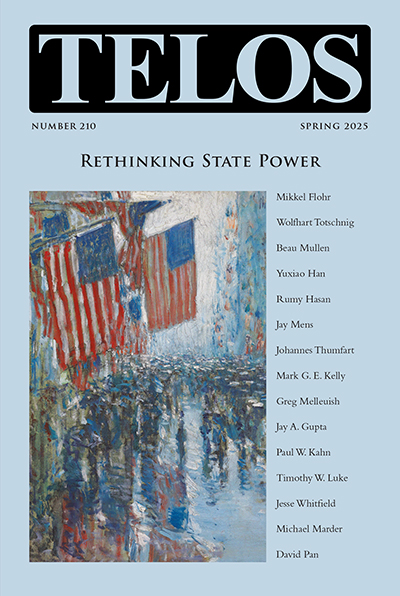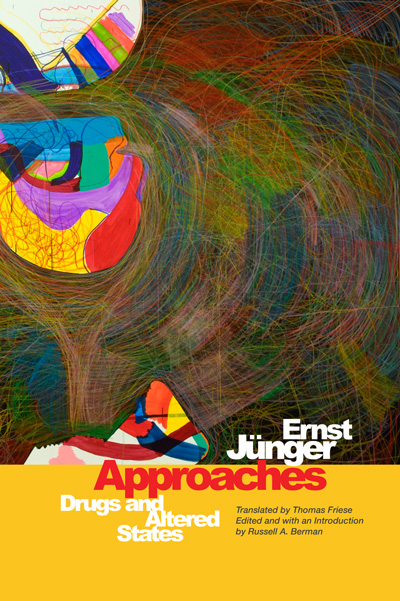The recent protests of the deaths of Michael Brown in Ferguson, Missouri, and Eric Garner in New York City, both black males, at the hands of police, ignited what some believe to be a new movement in the vein of the historic black Civil Rights Movement of the 1960s. Little did Messrs. Brown and Garner know that their tragic deaths would breathe new life into a near-dead progressive Left.
New groupings of Gen Xers and Millennials, networking through the Internet, have now displaced older activist groups led by the Rev. Jesse Jackson and the Rev. Al Sharpton. Other groups, like organized labor (especially SEIU), and perennial malcontents of Marxian legacy, such as the ANSWER coalition and the Revolutionary Communist Party, USA, have appeared in protests, alongside shadowy cadres of white anarchists, who in some cities have thrown firebombs and damaged property during protest actions. Unlike Occupy Wall Street and its derivatives, the new protest groups have an identifiable leadership, appear regularly in news media, and are building the road as they travel, that is, working out tactics and strategies based on their reading (or misreading) of past protest movements, as they go.
In 1968, there occurred what French Marxist Henri Lefebvre described as an “irruption,” during which French students, later in combination with intellectuals and labor activists, sought to overturn what they thought were unjust structures of their society. Meanwhile, in the United States, the protests in Chicago at the Democratic National Convention by Students for a Democratic Society (SDS), which had built on earlier protest and reform efforts such as the student-based Free Speech Movement, illuminated what Herbert Marcuse called “The Great Refusal,” in which increasing numbers of people were beginning to disbelieve in the fundamental institutions of society and their continued efficacy. Jürgen Habermas described this as a “legitimation crisis,” in his book of the same name. This accounted, in part, for the rise of the New Left.
Today, there is a multi-level legitimation crisis in black communities and among African Americans. This crisis had its origins toward the end of the Civil Rights Movement in the late 1960s after the assassination of the Rev. Dr. Martin Luther King, Jr., and has continued in a slow boil over the last forty to fifty years, awaiting a new generation, uninhibited by the older cultural norms prevailing in black communities, to free up new energies for social change protest. These new movement actors believe that this is their “moment.” However, it is not clear that they have thought matters through, nor learned from the successes and failures of previous efforts. In the meantime, the growth of this multi-level legitimation crisis in black neighborhoods and among ordinary people is leading to a disbelief and mistrust in the legitimacy and efficacy of core societal and community institutions. It is unknown whether this disbelief and disappointment will ramp up into more active resistance, or possibly curdle into violence, which in turn could encourage additional state violence in response. Let us examine just a few of these levels of crisis.
The first and most obvious de-legitimization is the justice system, or as locals call it, the “in-justice” system. In inner city neighborhoods, children and adolescents are often taught to be fearful of police, due to law enforcement being perceived as a harassing, occupying force in these communities. “Stop-and-frisk” and “broken windows” policing, wherein minor offenses are prosecuted, and racial profiling by police inculcate disrespect for law enforcement personnel, and the failure of police in many high-crime areas to successfully solve homicide cases and other crimes lead their residents to see little benefit to cooperating with them, since they will not likely be protected from gangs and other criminals who would intimidate residents from testifying as court witnesses. The judicial system is similarly implicated—several recent grand juries could not find grounds to indict police officers who killed unarmed black civilians, and the proceedings were viewed as having many irregularities.
Some black residents in poor neighborhoods believe that the justice system is fundamentally rigged against them at every level. Each encounter, even lesser interactions such as a corrupt bail bond system with excessive bail with interest payments, or misdemeanor fines that grow into larger sums beyond the means of citizens to pay, leading to bench warrants for their arrest, as well as other judicial entities such as the family courts that often remove children from their parents, not for actual neglect, but for being too poor to care for their children in a style that social workers would prefer, all contribute to the perception of unfair treatment. Small wonder that some black parents warn their children to be wary of any encounter with police as the earliest entry into that system—the outcomes are to them essentially unpredictable and viewed as likely to result in insult, injury, or death, even while going about one’s own business without criminal intent. Among many, faith has been lost. Or as some protesters say, “The Whole Damn System Is Guilty!”
Another legitimation crisis exists regarding the efficacy of the Black Church. The new movement activists often reject the historic religious traditions and institutions that accompanied blacks through slavery, Reconstruction, and then into the period of Jim Crow segregation through the 20th century up to the current day, even while borrowing from the churches’ earlier protest tactics. Some groups in the Black Church tradition have since joined the protests against police abuses, but the new movement leadership, a very heterogeneous group, often disclaims any fealty to the Judeo-Christian ethical framework, or to an absolute commitment to nonviolent protest that characterized the 1960s Civil Rights Movement.
Black churches seem increasingly irrelevant to the daily lives of Millennials, especially the college educated, as well as what is now two generations of inner city families that have no connection whatsoever to local black churches. Churches in some cities and neighborhoods have stood up to confront local political elites and law enforcement systems to demand better treatment of black residents. However, alongside this are churches that have been largely absent from any visible prophetic protest, or behind-the-scenes influence toward community uplift, preferring instead to promote a “prosperity gospel,” and providing their parishioners with the moral equivalent of spiritual junk food in the form of Gospel-themed entertainment, while omitting the Gospel’s weightier and liberatory content.
In Ferguson, the preacher-protesters of the earlier movements, specifically, the Rev. Jesse Jackson, and the Rev. Al Sharpton, were rejected and told to go home by the local protesters. The younger leadership of the new movement has demanded that the older activist leaders yield to them and let them shape the new movement as they see fit.
A third legitimation crisis exists regarding the state of African American families. In 1965, Daniel Patrick Moynihan, then a researcher in the Department of Labor, issued a report, The Negro Family: A Case for National Action, in which he identified a “tangle of pathology” regarding negative child socialization, lack of character development, and decline of black child well-being, which he traced to defects in black family structure, in particular, the waning of the married nuclear family and the absence of fathers in these families, leaving mothers to rear their children alone. Fifty years on, African American children in low-income urban areas have been the unwilling subjects of a vast social experiment in alternative family forms. Most of the black intelligentsia in the 1970s, 80s, 90s, and even today deny that family structure has any impact on children, preferring instead to blame external forces like structural unemployment, mass incarceration, and white racism. However, some children and adolescents from low-income black neighborhoods are opting out from their own families.
By fourth grade, the influence of parents and other caregivers wanes, and the power of the peer group takes over as the primary socializer of these young people. These youths no longer see their own families as a haven in a heartless world, but view them instead as unable to provide the basics of material security or to protect them on the street, at school, or elsewhere. Often the home is seen as the most dangerous place to be. Consequently, some youths seek out their peers, including gangs, to provide hierarchical social organization, protection against the dangers of life on the street, and access to the underground economy to get basic needs met. In addition, these youths desperately seek a sense of identity and belonging that their peers provide instead of their caregivers. The family is de-legitimized as the guiding force in these youths’ lives. The absence of positive socialization gives rise to criminality, and sometimes to dangerous encounters with police that can lead to bad life outcomes for these young people.
There are many other levels of legitimation crisis that are operating in African American communities today. However, in relation to the post-Ferguson protests, the most relevant question now is: will the new movement activists be able to sustain their movement? Many are college educated; they view social change through the lens of fragments of post-modernism, post-colonial theory, and the latest in feminist theory, as well as some of the protest tactics of Saul Alinsky. It is unclear how they financially sustain themselves, even though they have attempted to reach out to progressive foundations for funding their movement.
The stated intent of some groups like Black Lives Matter is to “make people uncomfortable” by direct action techniques, like shutting down entire subway systems at rush hour, blocking interstate highways, and otherwise making a nuisance, especially where consumer commerce occurs. The news media dutifully cover the events; Fox News predictably excoriates the activists as potentially violent, and perhaps anti-American.
However, this movement seems to have limited its concern to victims of what they describe as state violence, i.e., the police. Could it be that they think some black lives matter more than others, in that the number of killings of blacks by other black civilians each year far exceeds the approximately 318 deaths yearly that the Malcolm X Grassroots Movement estimates occurs to blacks from police or security guards? How is it that this predation of non-state violence escapes their notice?
Could there be another legitimation crisis at work—within the new protest movement itself?
There is a dialectical relationship between state violence and the violence among black residents that must be discerned and resolved, if black lives are to be saved and the neighborhoods healed. A much deeper analysis of the problem is required, and more durable strategies, like base building for electoral politics and policy changes at the local levels, must be pursued as a necessary precondition for reform. Some faith-based fellow-traveler groups are doing this, like the LIVE FREE campaign of the PICO National Network, which was invited by Ferguson pastors to help them do grassroots community organizing to build the foundation for long-term civic engagement by local residents to change conditions there.
For now, the new protest movement has not articulated tangible, attainable outcomes at the policy level, nor lasting cultural changes in the affected neighborhoods. It does not seem that making folks “uncomfortable” is likely to elicit sympathy or broad societal support to build the political power needed for the desired changes, despite the efforts of the protesters to develop a broad based cross-racial, cross-ethnic, and cross-class formation for activism.
There is an ongoing dialectical tension between freedom and authority that lies at the base of the interactions of the various social actors; protesters, police, courts, media, and ordinary residents wanting to go about their daily business, among others. Discerning the relationships among these actors and how this dialectic is implemented in inner-city neighborhood life may furnish clues on how to truly heal the harms visited upon black lives, whether by state violence, or by the hands of residents themselves. The resistance efforts of this new protest movement must also be mapped along this dialectic, in order to more clearly evaluate its potential as a source of lasting, positive social change.




WOW…I must say that article made my day. It indeed kept my attention. While reading it, I must say it just confirmed my belief that there appears to be a deficit of critical thinking skills in the black community (and I’m black). Now, there are indeed critical thinkers, but there seems less in the black community than our peers. For example…in your article it states “Most of the black intelligentsia in the 1970s, 80s, 90s, and even today deny that family structure has any impact on children, preferring instead to blame external forces like structural unemployment, mass incarceration, and white racism.”
After 50 years post the Daniel P. Moynihan report…and the status of poor black families today, is there any doubt that family structure plays a major part in the upward progress of black families? Surely anyone who doubts that at this point cannot be part of the black intelligentsia. I mean if the question is if 4X + 7 = 17…..how much is X? and the people giving answers come up with anything outside of 2.5, then those people getting the wrong answer are probably NOT part of the math intelligentsia! If people are getting the microphone and they’re considered part of the black intelligentsia and they still don’t think family structure is a major element or that the Daniel P. Moynihan paper is basically wrong, then please take the microphone out of that person’s hands! I mean really…and unfortunately I think this is what we’re seeing too often on tv shows. I’ve seen a majority of people who I don’t think have critical thinking skills from the black community be given the microphone and I probably disagree with most of what they spew out as rhetoric on civil rights issues.
I mean, our community can’t figure out the Tawana Brawley hoax, the OJ Simpson murder trial, and the majority of our community thought the Duke Lacrosse Players were guilty. Evidence doesn’t seem to play a major part with many of these people who have access to a microphone.
Where’s the DOJ report from the Obama administration being led by AG Eric Holder on the Trayvon Martin death and the Michael Brown death? What happened to transparency and quickness? I think anyone with a shred of critical thinking skills know that the DOJ reports are going to support the Zimmerman verdict and the Grand Jury conclusion in Ferguson. I watched the Zimmerman trial and agreed with the verdict. The evidence supported the verdict. When the main witness for the prosecution, the lead detective, says under oath that he believes Zimmerman’s story, then I think the case is over!!!
Young protesters interrupting the social gatherings of people in restaurants, closing down highway ramp exits during rush-hour, and yelling at people you don’t know is certainly not a ‘good’ way to get people’s attention to perhaps follow you. I’d say it sounds like a way to alienate people from your cause. Who can’t understand that? Shouldn’t that require just basic common sense as opposed to a Ivy League college degree?
And is changing the justice system really the answer? I think the majority of policemen are good people and there’re only a relatively small number of rogue cops. More training and cameras are quite reasonable…but wouldn’t a lot more get accomplished by simply telling black parents to have a talk with their children to NOT RESIST ARREST…FOLLOW POLICE INSTRUCTIONS? Michael Brown and Eric Gardner obviously resisted arrest. If people just followed police instructions, I’d say 99% of them would not have a problem of getting killed while being arrested. In the video of a black and white policeman killing a black passenger in lower NJ a few weeks ago, the black policeman clearly said DO NOT MOVE…and the guy, I guess with his hands up, ignored the instructions and started to get out of the car. What part of ‘Don’t Move’ didn’t he understand? There apparently was a gun in the glove compartment that the officer saw and then the entire stop took on another level. By the way, both black men in the car were felons so I think felons should not have weapons in their possession. Obviously the policeman went on high alert when a gun was spotted.
Again, I enjoyed the article, but critical thinking could basically answer all the questions in your article.